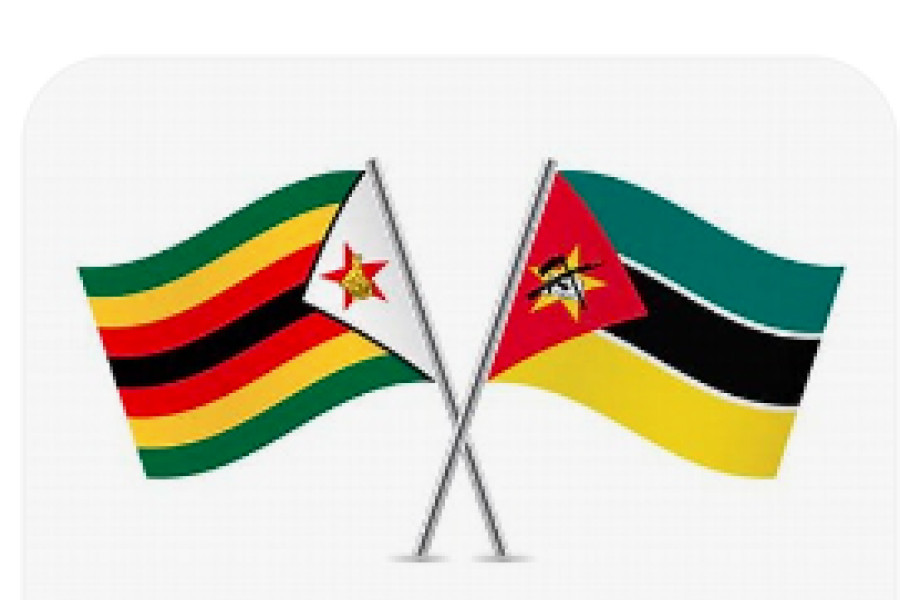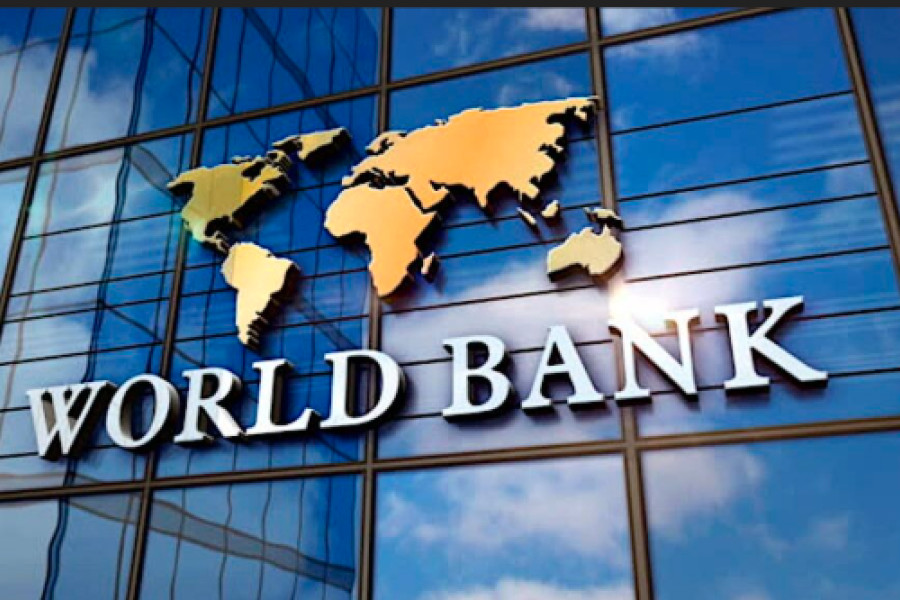
A Shared Harvest: How Cross-Border Agriculture Can Lift Zimbabwe and Mozambique Out of Poverty
The Zimbabwe-Mozambique Agricultural Value Chain and Trade Development Project (Zim-Moza ATDP) holds immense promise for transforming the agricultural sectors of both nations and, crucially, for making significant strides in poverty eradication. Let's delve deeper into the intricacies of this initiative, exploring its potential impact against the backdrop of the current poverty landscapes in Zimbabwe and Mozambique.
Unpacking the Zim-Moza ATDP: A Catalyst for Agricultural Transformation
Funded by a substantial EUR 3.5 million commitment from the Italian Agency for Development Cooperation (AICS), with Zimbabwe receiving EUR 1.166 million, the Zim-Moza ATDP signifies a concerted effort to leverage the power of agricultural trade for mutual economic benefit. The project's implementation in Zimbabwe, spearheaded by the Food and Agriculture Organization of the United Nations (FAO) in close collaboration with the Department of Economics, Markets, and International Trade under the Ministry of Lands, Agriculture, Fisheries, Water and Rural Development (MLAFWRD), underscores a multi-stakeholder approach crucial for its success.
At its core, the Zim-Moza ATDP is driven by the ambition to accelerate the agrifood transformation process within and between Zimbabwe and Mozambique. This encompasses a holistic approach that goes beyond simply increasing production. It focuses on strengthening entire agricultural value chains, from primary production to processing, marketing, and trade. By doing so, the project aims to create a more efficient, resilient, and inclusive agricultural sector that offers tangible opportunities for farmers and other actors to integrate into regional and global value chains.
The emphasis on value chain development is particularly significant. It recognizes that sustainable agricultural growth and poverty reduction are not solely about increasing yields. They require a well-functioning ecosystem where farmers have access to inputs, knowledge, financial services, processing facilities, and reliable markets. The Zim-Moza ATDP seeks to address these interconnected elements, fostering a more enabling environment for agricultural businesses to thrive.
Poverty in Zimbabwe and Mozambique: A Persistent Challenge
To fully appreciate the potential of the Zim-Moza ATDP in poverty eradication, it's essential to understand the current poverty levels and the underlying factors in both Zimbabwe and Mozambique.
Zimbabwe:
Zimbabwe has faced significant socio-economic challenges in recent decades, leading to high levels of poverty. According to recent estimates:
- Prevalence: A substantial portion of the Zimbabwean population lives below the poverty line. While figures may vary depending on the methodology and year, a significant percentage experiences multidimensional poverty, encompassing not just income but also access to health, education, and basic services.
- Drivers of Poverty: Several interconnected factors contribute to poverty in Zimbabwe, including:
- Economic Instability: Periods of hyperinflation, currency fluctuations, and limited economic growth have eroded livelihoods and savings.
- Climate Change Impacts: Frequent droughts, floods, and other climate-related shocks severely impact agricultural production, a mainstay for a large segment of the population, particularly in rural areas.
- Land Issues: Historical and ongoing land tenure issues have created uncertainty and hampered agricultural investment for some farmers.
- Limited Access to Resources: Many smallholder farmers lack access to crucial resources such as financing, quality inputs (seeds, fertilizers), irrigation, and modern farming techniques.
- Weak Market Linkages: Poor infrastructure, limited market information, and fragmented value chains prevent farmers from realizing the full potential of their produce.
- Unemployment: High unemployment rates, particularly among youth, limit income-generating opportunities outside of agriculture.
Mozambique:
Mozambique, despite its rich natural resources and economic growth in some sectors, also grapples with significant poverty:
- Prevalence: Mozambique remains one of the poorest countries in the world, with a large proportion of its population living below the poverty line. 1 Rural poverty is particularly pronounced.
- Drivers of Poverty: Key factors contributing to poverty in Mozambique include:
- Climate Vulnerability: Similar to Zimbabwe, Mozambique is highly susceptible to climate change impacts, including cyclones, floods, and droughts, which devastate agricultural livelihoods and infrastructure.
- Limited Infrastructure: Poor transportation networks, energy access, and communication infrastructure hinder economic development and market access, especially in rural areas.
- Low Agricultural Productivity: Many farmers rely on rain-fed agriculture with limited access to improved seeds, fertilizers, and irrigation, resulting in low yields.
- Weak Institutions and Governance: Challenges related to governance, corruption, and institutional capacity can impede effective poverty reduction efforts.
- Health Issues: High prevalence of diseases like HIV/AIDS and malaria can impact productivity and household incomes.
- Security Challenges: In certain regions, conflict and insecurity disrupt livelihoods and displace populations, exacerbating poverty.
Zim-Moza ATDP: A Pathway to Poverty Eradication
Against this backdrop of persistent poverty, the Zim-Moza ATDP offers a strategic approach to leverage agricultural trade as a powerful tool for poverty eradication in both Zimbabwe and Mozambique. Here's how the project's objectives and activities can contribute:
1. Empowering Smallholder Farmers and Enhancing Productivity:
- By focusing on strengthening agricultural value chains, the project will likely involve initiatives to improve farmers' access to quality inputs, training on sustainable farming practices, and technologies that enhance productivity. Increased yields and better quality produce translate directly into higher incomes for smallholder farmers, lifting them out of poverty.
- The emphasis on collaboration between public and private sector actors can facilitate the transfer of knowledge, technology, and best practices to farmers, further boosting their capacity.
2. Creating Market Opportunities and Fairer Prices:
- A core mission of the project is to enable farmers to actively participate in global value chains. This implies establishing more efficient market linkages, reducing transaction costs, and ensuring fairer prices for their produce.
- By facilitating trade between Zimbabwe and Mozambique, the project opens up new markets for farmers in both countries, diversifying their income sources and reducing reliance on local, often volatile, markets. This increased demand can drive up prices and improve profitability for agricultural producers.
3. Fostering Value Addition and Diversification:
- Strengthening agricultural value chains often involves promoting value addition activities such as processing, packaging, and branding. This creates new employment opportunities beyond primary production, particularly for women and youth, and increases the value of agricultural products, leading to higher returns for the entire value chain, including farmers.
- The project may also encourage diversification of agricultural production, reducing vulnerability to single crop failures and opening up new market opportunities for a wider range of products.
4. Enhancing Food Security and Resilience:
- Increased agricultural productivity and efficient trade contribute directly to improved food security at both household and national levels. When farmers have stable incomes and access to markets, they are better able to feed their families and invest in their livelihoods.
- A stronger and more interconnected agricultural sector in the region can also enhance resilience to climate shocks and other external factors. Diversified production and trade networks can help mitigate the impact of localized disruptions.
5. Creating Employment and Economic Growth:
- A thriving agricultural sector is a significant source of employment, particularly in rural areas where poverty is often concentrated. The Zim-Moza ATDP's focus on value chain development and trade will stimulate economic activity, creating jobs in production, processing, logistics, and related services.
- Increased agricultural trade can also contribute to overall economic growth in both countries, generating foreign exchange earnings and attracting investment in the sector. This broader economic development creates a more conducive environment for poverty reduction.
6. Strengthening Regional Integration and Cooperation:
- The Zim-Moza ATDP fosters collaboration between Zimbabwe and Mozambique, strengthening regional integration in the agricultural sector. This can lead to shared learning, harmonization of standards, and the development of joint strategies for addressing common challenges.
- Successful collaboration in agricultural trade can also pave the way for cooperation in other sectors, further contributing to regional stability and economic development.
Specific Contributions to Poverty Eradication:
- Increased Income for Smallholder Farmers: By improving productivity, market access, and prices, the project will directly increase the income of smallholder farmers, enabling them to meet their basic needs, invest in their farms, and improve their living standards. This is a direct pathway out of income poverty.
- Job Creation in Rural Areas: The development of agricultural value chains, including processing and marketing, will generate employment opportunities in rural areas, reducing unemployment and providing alternative income sources for households.
- Improved Food Security and Nutrition: Increased production and efficient distribution of nutritious food will enhance food security at the household level, reducing hunger and malnutrition, which are significant dimensions of poverty.
- Empowerment of Women and Youth: Agricultural value chains offer opportunities for women and youth to participate in economic activities. The project can specifically target these groups with training, access to resources, and market linkages, empowering them economically and socially.
- Building Resilience to Shocks: A more diversified and interconnected agricultural sector will be better equipped to withstand climate shocks and economic downturns, protecting vulnerable populations from falling deeper into poverty.
- Stimulating Local Economies: Increased agricultural activity and trade will stimulate local economies in rural areas, creating demand for goods and services and fostering overall economic development.
Conclusion: A Promising Path Forward
The Zim-Moza ATDP represents a significant and timely intervention with the potential to contribute meaningfully to poverty eradication in both Zimbabwe and Mozambique. By focusing on strengthening agricultural value chains, fostering trade, and empowering smallholder farmers, the project addresses key drivers of poverty in these nations.
However, the success of the Zim-Moza ATDP will depend on effective implementation, strong collaboration among all stakeholders, and a conducive policy environment in both countries. Sustained commitment and investment will be crucial to translate the project's objectives into tangible improvements in the lives of vulnerable populations.
The EUR 3.5 million investment, with EUR 1.166 million specifically allocated to Zimbabwe, is a significant step. It signals a recognition of the transformative power of agriculture and trade in achieving sustainable development goals, including poverty reduction. As the project unfolds, its impact on the livelihoods of farmers and the broader economies of Zimbabwe and Mozambique will be closely watched, offering valuable lessons for similar initiatives across the African continent. This collaborative endeavor offers a beacon of hope for a more prosperous and equitable future for the people of Zimbabwe and Mozambique.
Related Stories

The Future of Sustainable Development in an Artificial Intelligence Era: Africa’s Path Forward

The World Bank at 80: An Afrocentric Critique of Poverty Alleviation Efforts